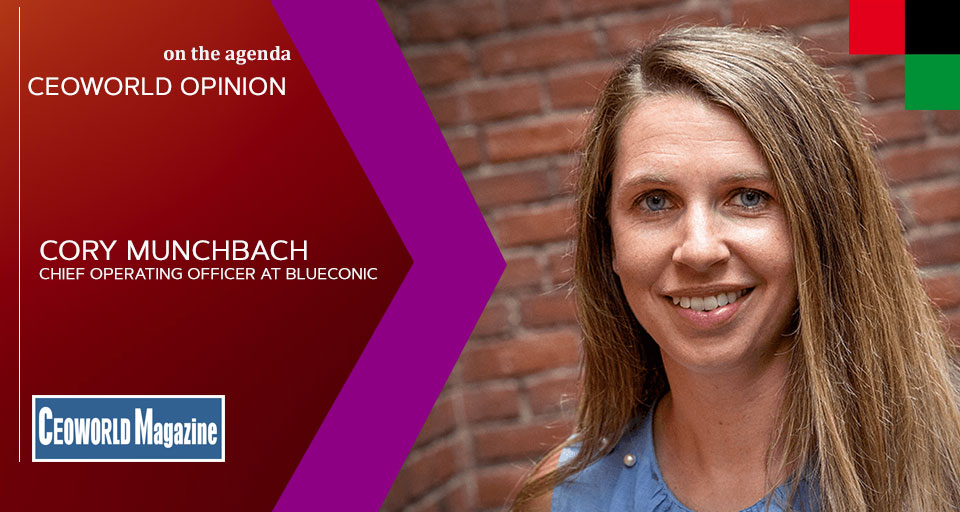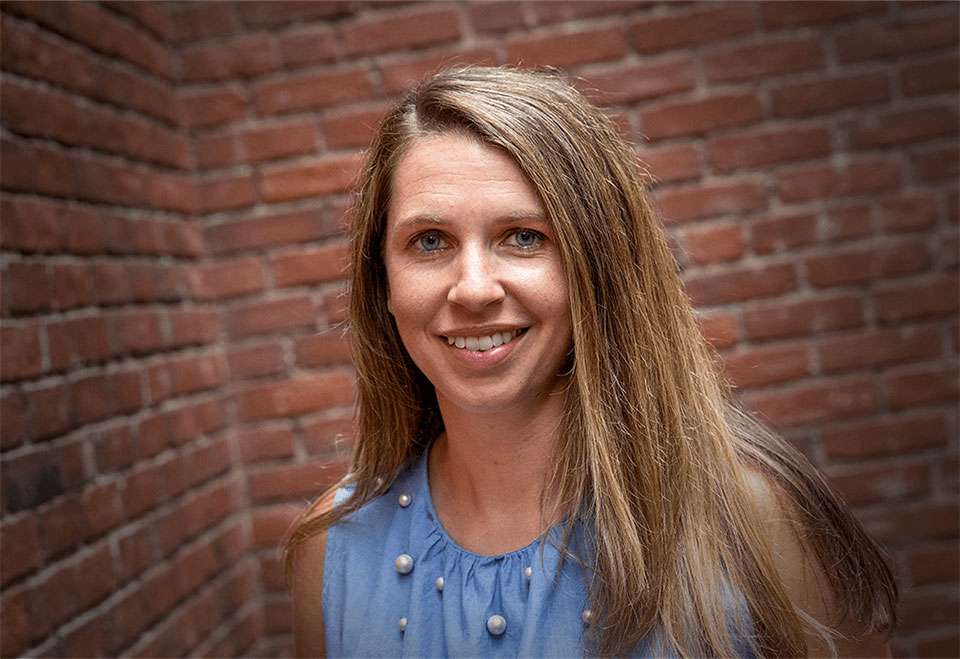Navigating the challenges of a post-Covid hybrid back-to-work model

A theme of my pre-adulthood years was “grey” – specifically, a constant push by my mom to see things less in black-and-white and more for the grey between. I can’t pinpoint the exact moment I realized I’d gotten better at seeing the grey – in fact I live in it now– but I can say that leading through the COVID-19 pandemic was an intense new lesson in embracing the grey.
Being a leader at any organization means you have to make certain choices and decisions that affect your team, but doing so during a pandemic was a whole other level. There are pitfalls to conventional wisdom and soundbite leadership at the best of times, but there was (is) no playbook for how to respond to a level of shared-but-uneven uncertainty, suffering, and experience. And while our company was in a privileged and fortunate position to respond well to many of these new dynamics, it was a dramatic set of changes, for better and for worse.
BlueConic’s initial transition to remote work was driven by the paramount need to keep our employees safe. At the start of the pandemic, more than 90% of employees were in an office (either Boston in the US or Nijmegen in the Netherlands). As of writing, a full third of our employees will remain fully remote even once offices re-open, while the rest have asked for a flexible, hybrid approach.
As we shift – not “back” but rather “toward” – a new way of working for all of us, we’ve created a framework to help guide our team through the transition, which consists of three core principles:
- Take it easy: Change is hard, which is why we have included a window of time for people to ease back in and access what will work. After such a long period of home working, we need to adapt and find what works best for the individual.
- Test and learn: Employees have been asked to embrace an open mind and try new things – whether that’s new commuting methods or a new format for team meetings. We’ve also given employees time to experiment before they have to commit to a semi-permanent approach (for facilities and planning purposes, we’re using a “benefits” model with an annual open enrolment period and an option to change based on qualifying life events).
- Be patient and helpful: We recognize that post-pandemic life is always going to be harder for some to navigate than for others. We’re encouraging employees to be extra empathetic and recognize that some colleagues may need a little extra time and support to adjust.
While creating this framework, it was abundantly apparent that we’d have to make allowances for geographical variances in culture, vaccination roll-out, and new variants. For instance, vaccination has proven to be a polarizing issue in both the US and Europe. A growing number of tech companies (which is our reference set) like Microsoft, Salesforce, and Lemonade have already mandated that any workers returning to the office need to be vaccinated. More recently, CNN fired three employees who violated the company policy by coming to work unvaccinated against the COVID-19 virus in a leaked memo.
Obviously the most complicated aspect of this is enforcement and privacy, and different countries have different rules. For example, the Netherlands (where half our employees live and work) has descriptive but rather vague language around how to make your workplace safe from COVID but prevents asking about or requiring vaccination. But in the US, it’s been clear from the EEOC and other governing bodies that for the sake of public health, and affording for health and religious exemption, that requiring a vaccination – and proof of it – is acceptable. Ultimately, we felt strongly, for the safety of our employees, their families, and their communities, that anyone who wants to return to the office and/or business travel must be fully vaccinated.
There’s also a very real and important conversation to be had about the nature of work – particularly about what physically requires you to be in an office and what does not. Leaders who care more about presenteeism over output are the ones who will lose good staff in the long run. To this end, we plan to formally ask staff to opt into their preferred, permanent work arrangement — after a multi-month experimentation period where we evaluate impacts on productivity, sense of connectedness to other employees, and employee satisfaction. Ultimately, these decisions will come with benefits and expectations based on the selected work arrangement, ranging from stipends for remote workers to scheduled days when teams are together.
The lesson of the last year is that leaders need to do the work to understand the grey while being clear and decisive in the resulting communications and actions. There should be no room for interpretation or guesswork. For example, instead of continuously moving the goalposts on an office re-opening or simply closing indefinitely, we created phases tied to objective milestones like “60 days of flat or declining cases in the region” and “60 days after vaccine general availability.” Your decisions won’t garner universal agreement, but by explaining the rationale behind them, they are much more likely to earn the necessary support while making it far easier to enforce the necessary guardrails (no, it’s not easy to tell an eager someone they can’t come to the office yet because they haven’t gotten their second vaccine dose). Hope is not a strategy and during uncertain times it’s better to take a cautious but deliberate approach. Finally, when in doubt, be human above all else in your approach.
Written by Cory Munchbach.
Add CEOWORLD magazine to your Google News feed.
Follow CEOWORLD magazine headlines on: Google News, LinkedIn, Twitter, and Facebook.
This report/news/ranking/statistics has been prepared only for general guidance on matters of interest and does not constitute professional advice. You should not act upon the information contained in this publication without obtaining specific professional advice. No representation or warranty (express or implied) is given as to the accuracy or completeness of the information contained in this publication, and, to the extent permitted by law, CEOWORLD magazine does not accept or assume any liability, responsibility or duty of care for any consequences of you or anyone else acting, or refraining to act, in reliance on the information contained in this publication or for any decision based on it.
Copyright 2024 The CEOWORLD magazine. All rights reserved. This material (and any extract from it) must not be copied, redistributed or placed on any website, without CEOWORLD magazine' prior written consent. For media queries, please contact: info@ceoworld.biz
SUBSCRIBE NEWSLETTER









